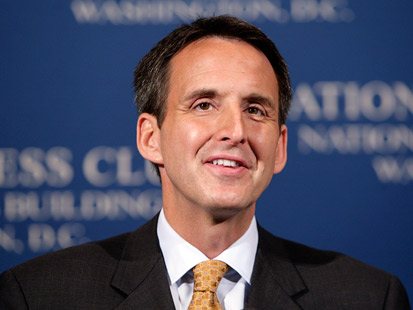The Federal Trade Commission’s (FTC) supposedly voluntary guidelines for marketing food products to children, if adopted, would undermine free speech, seriously hinder small businesses, consumer choice, and could adversely affect rates of childhood obesity.
The guidelines, put forth by an interagency working group with members from the FTC, Centers for Disease Control and Prevention (CDC), Food and Drug Administration, and the U.S. Department of Agriculture, stipulate that producers of food and drink products who market to children between the ages of 2 and 17 voluntarily make sure those products contribute to the government’s recommended daily nutritional requirements and do not contain high levels of added sugar or salt.
While the guidelines are touted as voluntary, the power these five agencies wield over the industry would almost certainly make them a de facto mandate, as few members of the industry would risk running afoul of government entities that can issue licenses, fines and sanctions, ban products, and file lawsuits.
The goal of the guidelines, as stated in the Agencies’ report is to address “high rates of childhood obesity” over the next five years. To accomplish that goal, they want to modify the nutritional makeup of foods that are heavily marketed to children so that only foods that make “a meaningful contribution to a healthful diet” are advertised to kids and teens.
Historically, proposed limits on speech must pass through a rigorous test to determine if the threat the proposed restriction is supposed to address is real and the solution is applicable and imposes as few restrictions as possible to accomplish the goal. When FTC tested a similar ad-ban in the late 70s to stem the rising rates of childhood tooth decay, it was met with strong public resistance to the restrictions on speech and skepticism about the effects of advertising on tooth decay. The proposal was shot down and congress cut the agency’s funding. With regard to this latest FTC proposal, again, there is little or no data to suggest the rates of childhood obesity are actually a problem or that restrictions on speech are justified.
According to the CDC’s own data, as of 2010 rates of childhood obesity seem to have hit a plateau, remaining constant for the past 10 years and suggesting that a decline may be on the horizon. The report issued by the agencies provides no supporting evidence for a link between marketing and increased consumption.
In addition, fast food only makes up an average of 17 percent of adolescents’ caloric intake, according to the American Council on Science and Health. Teens, and particularly children, do most of their eating at home. Parents still make the ultimate decision about what foods are brought into the home, regardless of what any TV cartoon character says.
According to the FTC’s report, marketing to kids can be identified if 20 to 30 percent of the market is under 17 years old or if the promotional material contains elements that are “particularly popular with kids or adolescents,” such as celebrities, athletes, cartoons, models, themes, and language. Thus, if a cereal company chooses to limit advertising its “unhealthful” food, it would be prohibited from using any of those kid-appealing elements in its promotional materials. Of course, this means that such advertisements aimed at consumers over the age of 17, many of whom enjoy a lot of the same themes, people, and language as those under 17, would also be limited.
The proposal also would limit companies advertising of food items that may not be harmful, but do not contribute “significantly” to nutritional requirements from advertising. For example, a company selling water or sugar-free gum would be barred from marketing in a way that would appeal to children.
In addition, just because Tony the Tiger is off the TV does not mean the kids and teens aren’t going to desire sugary cereals, chips, or soda. If children eat “un-healthful” foods under the guidance of parents they can learn habits of moderation and balancing their diet. On the other hand, if children never encounter such foods in the home they may seek them out on their own or wait until they are old enough to indulge without guidance on how to incorporate those foods into a balanced diet.
The proposal will also likely stifle current efforts to promote healthy eating and living. Some of the largest food companies already spend millions of dollars each year on reformulating products to reduce calories, salt, and fat, and sponsor events such as races and after-school fitness programs. This proposal would put a stop to programs like the Kellogg Company’s “Earn Your Stripes” campaign, which utilizes Tony the Tiger as well as sports stars to encourage children to get involved in their community and to have families be active together.
This proposal is bad for consumers, bad for small business and bad for kids. The way to tackle the obesity among our nation’s youth is to address the root of the problem, which is a lack of parental guidance and availability of affordable produce. Rather than increasing costs and burdens for companies and infringing on free speech, perhaps the agencies ought to find ways to deregulate and make it easier and cheaper for companies to expand efforts already underway to meet the growing consumer demand for healthier food.

COMMENTS
Please let us know if you're having issues with commenting.